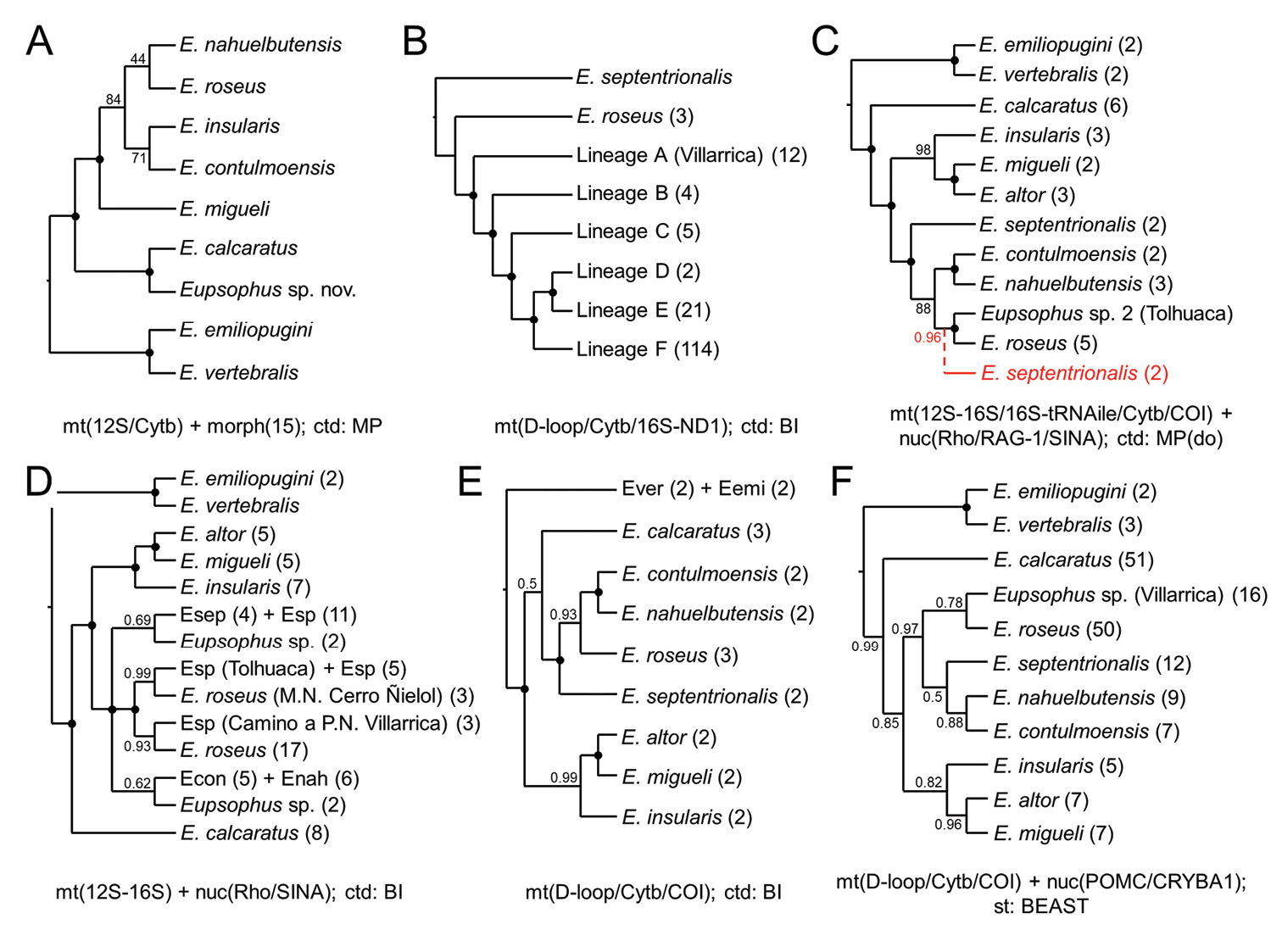
|
||
|
Phylogenetic hypotheses of Eupsophus obtained with DNA sequences. In some of these studies several phylogenetic analyses were made but here we show the hypotheses preferred by the authors. The trees were simplified by merging the terminal nodes by species or other relevant groupings and uniforming the branch lengths, but maintaining the original topologies. The numbers next to the nodes indicate the bootstrap or jackknife support values for the maximum parsimony (MP) analyses or posterior probability for those of Bayesian inference (BI). Black circles over the nodes indicate maximum support. The number of specimens included for each taxon or population is indicated in parentheses (omitted when only one was included). When relevant, the localities of origin of some specimens are indicated in parentheses. For simplicity, some names were abbreviated (for example, Esep = E. septentrionalis; Esp = Eupsophus sp.). Below the trees are indicated the gene fragments used, whether they are mitochondrial (mt) or nuclear (nuc), the analysis strategy (concatenated: ctd; species tree: st) and the phylogenetic reconstruction method used. A Nuñez (2003); this is the only tree of those shown where morphological characters (15) were included to build it B Nuñez et al. (2011); the only one of these studies where not all species of the genus were included; lineages A-F were considered a priori as E. calcaratus C Blotto et al. (2013); the alternative position of E. septentrionalis (with its respective support value) obtained with a Bayesian analysis of the same data set is shown in red; the method used was MP with direct optimization (do); the support values correspond to jackknife absolute frequencies D Correa et al. (2017); note that several undescribed populations (Eupsophus sp. = Esp) appear intermixed with some nominal species of the roseus group; in this analysis E. contulmoensis (Econ) and E. nahuelbutensis (Enah) make up a clade but they are not reciprocally monophyletic E Suárez-Villota et al. (2018a); in this analysis E. vertebralis (Ever) and E. emiliopugini (Eemi) are not reciprocally monophyletic F Suárez-Villota et al. (2018b); they obtained a different topology within the roseus group in maximum likelihood and BI analyses of the same concatenated data set (not shown). |